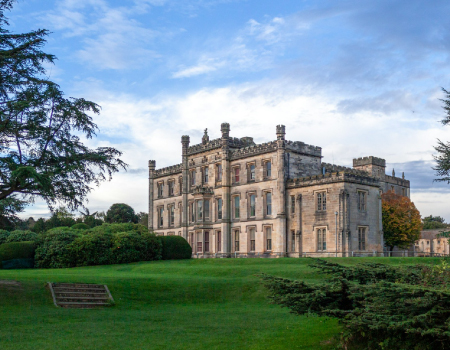Historic and listed buildings are the jewels in the built environment’s crown – emblems of our origins, our identity, and our past.
It’s entirely right that organisations exist to protect these buildings’ character, ensuring that any changes made are sympathetic, appropriate, and respectful of their unique context.
Without a bold rethinking of how conservation is approached – particularly by bodies like English Heritage – we risk rendering these buildings economically unsustainable, physically uninhabitable, and environmentally unviable.
And if that happens, some of our most treasured historic buildings will slip into decay – not through neglect, but through the unintended consequences of preservation itself.
Fabric first: inherently more efficient buildings
In our experience, one of the biggest barriers to the long-term sustainability of historic buildings is the routine refusal by heritage organisations to permit sensible, low-impact upgrades that would actually protect these buildings overtime.
Many of these changes come under the ‘fabric first’ banner – changes or additions to the building’s core structural elements such as roofs, walls, windows and insulation. These changes help increase efficiency, reduce energy consumption, and maintain temperatures. (Historic England has written about this in more detail here).
The fabric first approach creates buildings that are more comfortable, inherently less expensive to run, and lowers carbon emissions. But the approach inevitably involves changes to the building’s historic features – removing wall coverings to apply insulation, for example, or replacing old single-glazed windows with double-glazed alternatives. And it’s at this point that heritage organisations often raise objections.
Ironically, in seeking to preserve a building’s historical integrity, heritage organisations seem perfectly willing to block improvements to its fabric that would actually help to secure the building’s longevity!
Unless this mindset shifts, we risk leaving many historic buildings trapped in a cycle of underuse and underinvestment – beautiful, but unsustainable.
History gone mad: the wood panelling and floor debacle
A typical example - illustrates this conflicted behaviour very clearly.
Whilst working on a historic residential building, our team needed to open a wooden panelled wall to inspect the services behind it, and also part of the floor (for safety reasons).
The heritage organisation refused, on the grounds that opening the panel would damage the historic content of the building.
It’s a nonsensical decision by any measure - relegating safety to second place behind history - but what the heritage organisation also failed to recognise is that this attitude had serious implications for the future survival of the building.
The gas company, under its legal obligation to ensure safety, was forced to turn off the gas supply permanently, meaning building’s residents had to install electric heating.
This caused the flats’ heating costs to skyrocket, potentially triggering fuel poverty, and parts of the building not being heated and becoming damp, rendering the properties non-viable for future sale or rent.
A building unused falls into disrepair, so prioritising features over fabric (or any other improvement intended to prolong the usability of the building)makes no sense from a conservation perspective at all.
A recipe for heritage failure
It’s a pattern we see time and time again in the historic buildings sector: heritage and planning decisions militating against the very improvements that will ensure buildings’ continuing viability as working, thriving, lived-in structures.
On the fabric front, we come up against refusal of energy-saving windows and insulation regularly, whilst on the mechanical and electrical (M&E) front, we find that highly efficient innovations like heat pumps and photovoltaic (PV) solar panels are also frequently rejected.
The very real danger here is that with energy prices rising - and set to continue to do so - the failure of the heritage organisations to allow vital energy-saving and heating efficiency work will lead to historic property owners and residents simply letting rooms become cold and damp.
This will precipitate a cycle of decay that, in the next ten years, threatens to rob this country of much of its historic built environment.
What has to change to put fabric first?
The irony here is that the guardians of our historic buildings seem to have little grasp of history. What we call historic buildings have, in fact, evolved over time; they didn’t come with electricity, heating, and plumbing, after all – these were added later!
The heritage organisations must accept a core truth; that to improve a building’s fabric, we must first be able to touch it. Leaving it untouched risks making the building unusable, which is the opposite of conservation.
At a policy and governance level, this attitude must change within the heritage organisations concerned. Against a backdrop of fuel poverty and carbon emissions crackdowns, saying no to improvements to a building’s fabric and services that will not only help safeguard its future but also fulfil its obligations to sustainability and environmental responsibility is nothing short of immoral.
There’s a toxic brew of challenges simmering away in the historic buildings sector. The heritage organisations need to wake up and smell the coffee - because by putting fabric last, they could be sleepwalking into disaster.
For more information on how Green Building Design’s services can help improve, protect, and sustain historic buildings, get in touch today.





.png)




